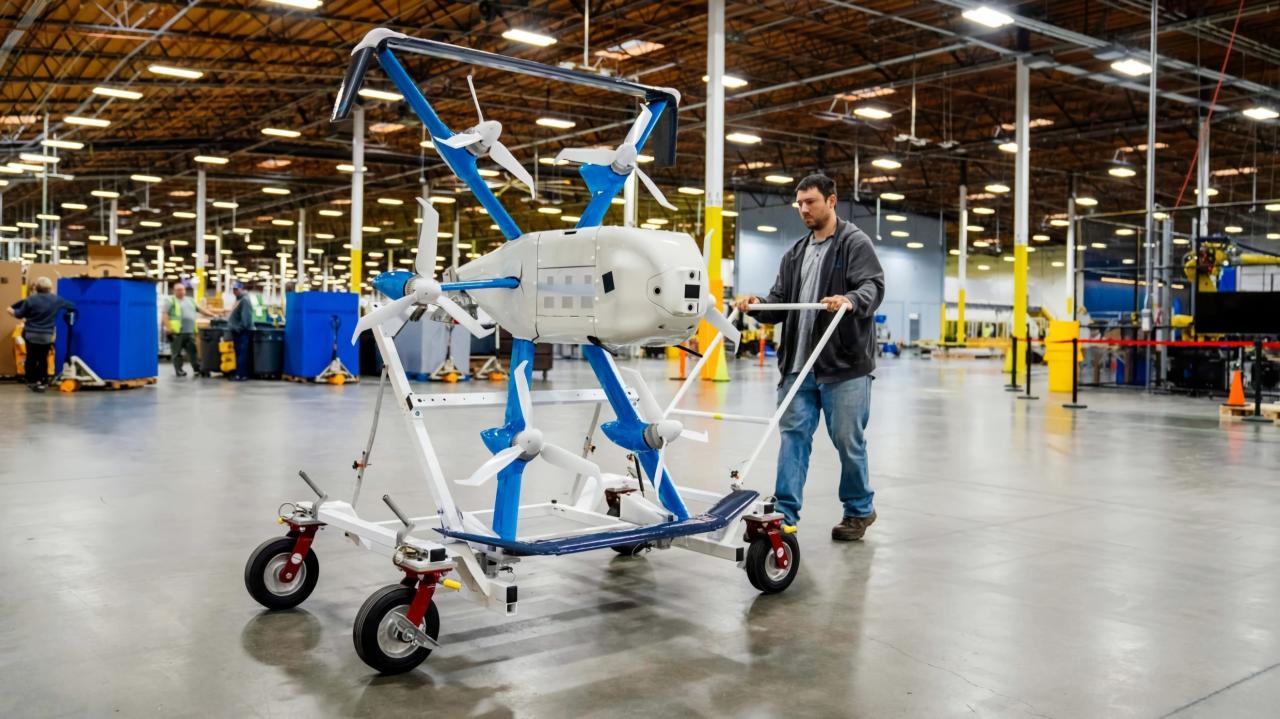Amazon drone delivery locations are rapidly expanding, marking a significant shift in the logistics landscape. This exploration delves into the current operational status, geographic reach, infrastructure needs, regulatory hurdles, public perception, and the economic impact of this innovative delivery system. We’ll uncover the challenges and successes, providing a comprehensive overview of Amazon’s ambitious drone delivery program and its implications for the future of shipping.
From the initial test flights to the current operational areas, we’ll trace the evolution of Amazon’s drone program. We’ll examine the crucial infrastructure required, including the technology, personnel, and regulatory compliance needed to make drone deliveries a reality. We’ll also consider the public’s response to this technology, exploring both acceptance and concerns. Finally, we’ll analyze the potential economic effects on communities and the broader delivery industry.
Current Amazon Drone Delivery Program Status
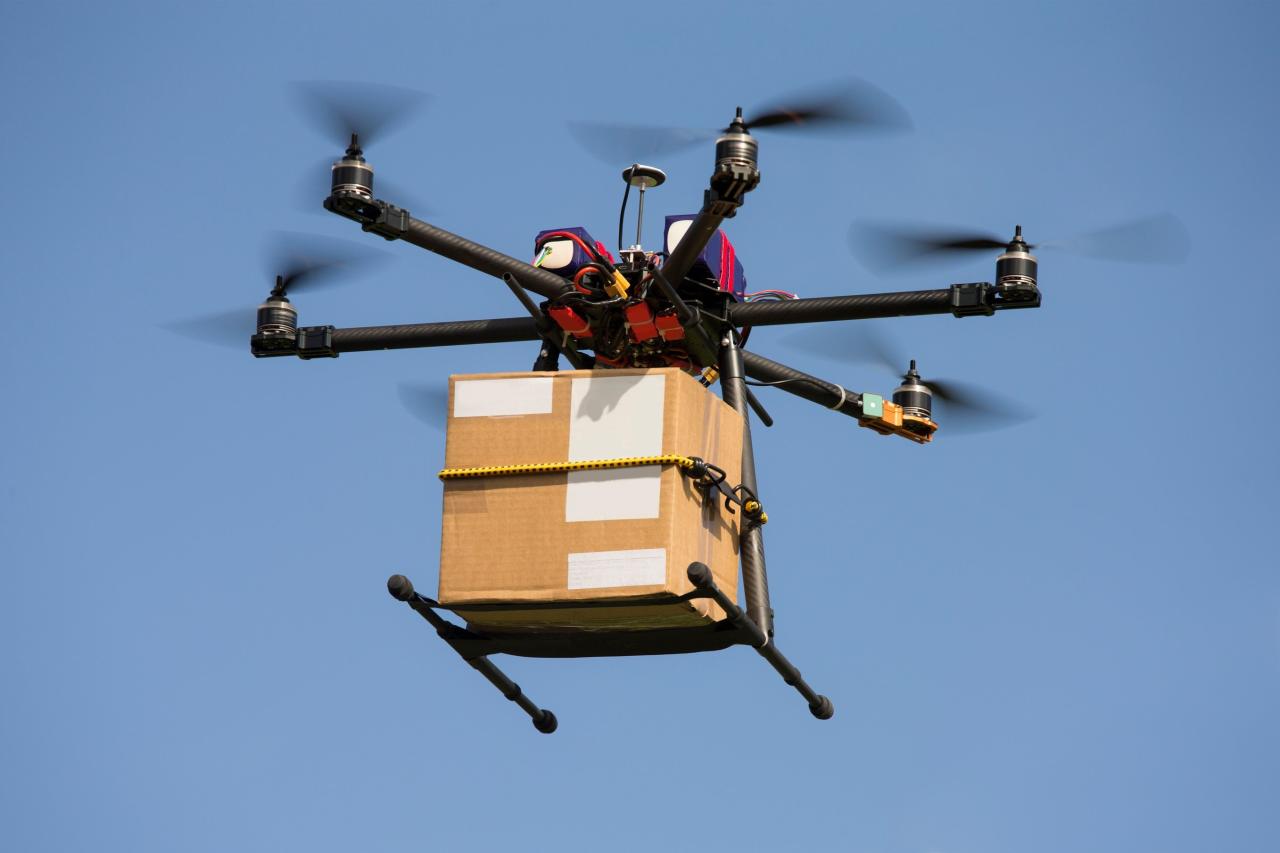
Amazon’s drone delivery program, officially known as Amazon Prime Air, is steadily progressing, though it’s still in a relatively early stage of widespread deployment. While not yet a ubiquitous service, it represents a significant step towards faster and more efficient delivery methods, particularly in areas where traditional ground transportation faces challenges. The program’s expansion is gradual, focusing on refining technology and optimizing operational logistics.Amazon Prime Air currently operates in a limited number of locations, primarily focusing on smaller, less densely populated areas.
This strategic approach allows Amazon to test and refine its drone technology and delivery protocols in controlled environments before scaling up to larger cities. The program’s success hinges on factors such as regulatory approvals, technological advancements, and public acceptance. Addressing concerns about safety, noise pollution, and privacy is crucial for wider adoption.
Geographic Coverage and Limitations
Currently, Amazon Prime Air’s operational reach is limited. The company has established delivery hubs in select locations within the United States, primarily in rural or suburban areas. These areas are chosen for their relatively open airspace and lower population density, minimizing potential risks and simplifying initial operational complexities. Expansion into more densely populated urban areas is a future goal, but it requires overcoming significant technological and regulatory hurdles, such as navigating complex airspace and addressing concerns about noise and safety in close proximity to residential areas.
For example, a successful launch in Lockeford, California, demonstrates the program’s capability in a smaller, less congested environment, but it’s a far cry from the complexities of deploying drones in a city like New York. The program’s expansion will likely be gradual, with a phased approach that prioritizes safety and operational efficiency.
Significant Milestones in Program Development
Amazon’s Prime Air program has seen significant advancements since its inception. Key milestones include the initial concept announcement in 2013, followed by years of extensive testing and technological refinement. Subsequent milestones include successful test flights in various locations, securing necessary regulatory approvals (a crucial step in many jurisdictions), and the commencement of limited commercial operations in select locations.
The transition from experimental flights to actual customer deliveries marked a critical point in the program’s maturation. The ongoing development of drone technology, including advancements in autonomous navigation, obstacle avoidance, and package handling, will continue to shape the program’s progress and future capabilities.
Eligible Package Types for Drone Delivery
The types of packages currently eligible for Amazon Prime Air delivery are generally limited to smaller, lighter items. This is primarily due to the current payload capacity limitations of the drones used. Examples include everyday items such as small electronics, books, and certain household goods. Larger or heavier packages remain outside the scope of the current drone delivery system.
Amazon continually assesses the feasibility of expanding the range of eligible items based on advancements in drone technology and operational efficiency. The program’s current focus is on delivering smaller, less time-sensitive packages, which are ideal for testing and refining the drone delivery system before scaling up to handle larger and more diverse items.
Geographic Locations of Drone Delivery Operations
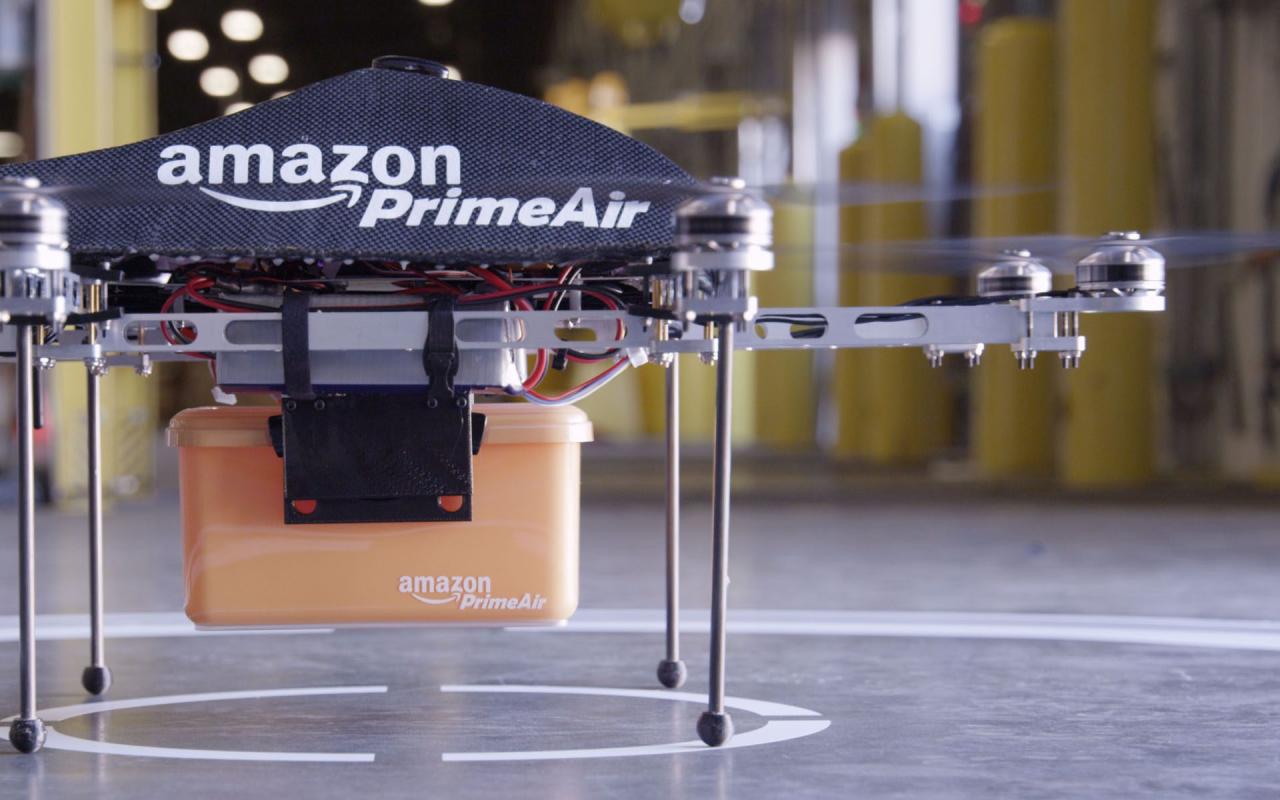
Amazon’s drone delivery program, while still in its relatively early stages, is expanding its operational footprint across the United States. The selection of these locations involves a complex interplay of factors, aiming for optimal efficiency and regulatory compliance. This section details the current geographic distribution of Amazon’s drone delivery operations.
Current Operational Locations
The following table summarizes the current operational locations for Amazon’s drone delivery program. Note that this information is subject to change as the program expands. It’s crucial to consult official Amazon sources for the most up-to-date details.
| Location | State/Province | Start Date (Approximate) | Current Status |
|---|---|---|---|
| College Station | Texas | 2019 | Operational |
| Lockeford | California | 2019 | Operational |
| Tucson | Arizona | 2021 | Operational |
| San Bernardino County | California | 2022 | Operational |
| Elkton | Maryland | 2022 | Operational |
Geographic Distribution Map
A map illustrating the geographic distribution of Amazon’s drone delivery locations would show a cluster of operational areas primarily in the southwestern and central United States. The map would use a color-coded system, for example, using a dark green marker to represent operational locations. A lighter green could indicate areas under consideration for future expansion.
The map’s key would clearly define these color codes. The map would also include major cities and state boundaries for context. The overall impression would be one of relatively sparse coverage across a large geographic area, reflecting the challenges and complexities of implementing widespread drone delivery.
Factors Influencing Location Selection, Amazon drone delivery locations
Several key factors influence the selection of locations for Amazon’s drone delivery operations. These include:* Population Density: Areas with sufficient population density to justify the investment in drone delivery infrastructure are prioritized. High population density ensures a higher volume of potential deliveries, making the operation economically viable. For example, the selection of College Station, Texas, a university town, likely reflects this factor.* Infrastructure: Existing infrastructure, such as suitable airspace and robust communication networks, plays a crucial role.
Areas with less air traffic congestion and reliable internet connectivity are preferred to ensure smooth and safe drone operations.* Regulatory Approvals: Securing necessary regulatory approvals from the Federal Aviation Administration (FAA) is a critical step. Locations with a more streamlined approval process or existing supportive regulatory frameworks are more attractive. The ongoing dialogue and cooperation between Amazon and the FAA is crucial to the expansion of these operations.
Infrastructure Requirements for Drone Delivery Locations
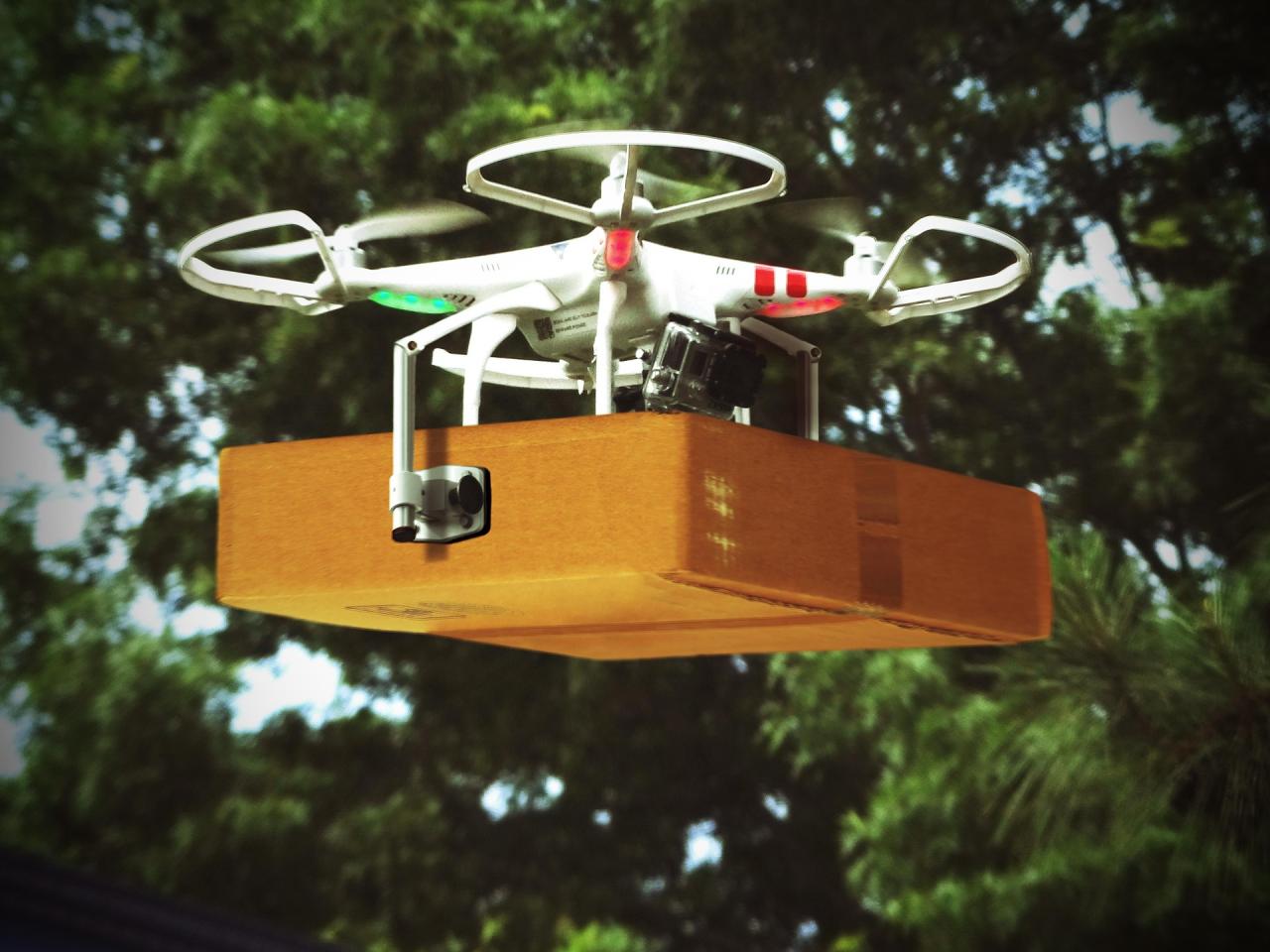
Setting up a successful Amazon drone delivery operation requires more than just drones. A robust and reliable infrastructure is crucial for efficient and safe delivery, encompassing various technological and physical components across multiple locations. This infrastructure needs to handle everything from drone takeoff and landing to package handling and communication systems. Failure in any area can significantly impact the overall efficiency and safety of the delivery network.
The infrastructure requirements are complex and vary depending on the specific geographic location and the scale of the operation. Factors like terrain, weather patterns, and population density all play a role in determining the specific needs of each location. Successfully navigating these challenges is critical to the long-term viability of drone delivery programs.
Essential Infrastructure Components
Several key infrastructure components are essential for supporting Amazon drone delivery operations. These components work together to ensure safe, efficient, and reliable delivery of packages.
- Drone Landing Pads: Secure, designated areas for drones to take off and land safely. These pads often include features like weather protection, obstacle avoidance systems, and charging capabilities. The design varies depending on the environment; some may be simple, flat surfaces, while others might be more complex structures to handle various weather conditions.
- Communication Networks: Reliable communication systems are vital for real-time tracking, navigation, and control of drones. This typically involves a network of ground stations and cellular or satellite communication links, ensuring constant connectivity even in remote areas. A robust network is critical for safe and efficient flight operations.
- Package Handling Systems: Efficient systems for loading, unloading, and sorting packages at drone delivery locations are necessary. This may involve automated systems or dedicated personnel to manage the flow of packages, minimizing delays and ensuring timely delivery. The system must be scalable to accommodate fluctuating delivery volumes.
- Power Supply: A reliable power supply is crucial for charging drones and powering other infrastructure components. This could include grid electricity, backup generators, or renewable energy sources, ensuring continuous operation even during power outages. Redundancy is key to maintaining operational continuity.
- Security Systems: Robust security measures are essential to protect drones, packages, and the overall infrastructure from theft or damage. This may include surveillance cameras, access controls, and perimeter fencing. Security is paramount for ensuring the safety and integrity of the delivery process.
- Maintenance Facilities: Dedicated spaces for drone maintenance, repair, and storage are required to ensure the drones are in optimal operating condition. This includes areas for cleaning, inspections, and part replacements. Regular maintenance is crucial for the longevity and safety of the drone fleet.
Challenges in Establishing and Maintaining Infrastructure
Establishing and maintaining the necessary infrastructure for drone delivery presents several unique challenges across different geographic areas.
- Geographic Variations: Different terrains (mountains, forests, urban areas) present unique challenges for drone operation and infrastructure placement. For example, mountainous regions may require more sophisticated navigation systems and landing pads that can accommodate uneven terrain. Dense urban areas pose challenges related to airspace management and potential obstacles.
- Weather Conditions: Adverse weather conditions like strong winds, rain, or snow can significantly impact drone operations. Infrastructure needs to be designed to withstand these conditions, potentially requiring weather-resistant materials and backup systems. Real-time weather monitoring is crucial for scheduling and rerouting flights.
- Regulatory Compliance: Navigating the complex regulatory landscape for drone operations varies significantly across different regions and countries. Obtaining necessary permits and approvals can be a time-consuming and challenging process, impacting the timeline for infrastructure development. Staying up-to-date with evolving regulations is essential.
- Infrastructure Costs: The initial investment for establishing drone delivery infrastructure can be substantial, especially in remote or challenging locations. This includes costs associated with land acquisition, construction, communication systems, and security measures. Finding cost-effective solutions while maintaining safety and reliability is a critical challenge.
Comparison with Traditional Delivery Methods
Drone delivery infrastructure differs significantly from traditional delivery methods in several key aspects.
- Localized Infrastructure: Unlike traditional delivery networks which rely on extensive road networks and distribution centers, drone delivery requires a more localized infrastructure focused on strategically positioned landing pads and smaller, more dispersed facilities. This results in reduced reliance on existing road networks but increases the need for a sophisticated network of landing sites.
- Technological Dependence: Drone delivery is heavily reliant on advanced technologies like GPS, communication networks, and autonomous flight systems, whereas traditional delivery methods rely more on human drivers and established transportation networks. This heightened technological dependence necessitates robust maintenance and monitoring systems.
- Scalability Challenges: Scaling drone delivery operations to cover large geographic areas requires significant investment in infrastructure and technology, posing unique scalability challenges compared to the gradual expansion of traditional delivery networks. Careful planning and phased rollouts are crucial for managing growth effectively.
Regulatory and Legal Aspects of Drone Delivery Locations
Amazon’s drone delivery program faces a complex regulatory landscape, varying significantly across different jurisdictions. Understanding and navigating these legal frameworks is crucial for successful and safe operation. Failure to comply with regulations can lead to significant penalties, operational disruptions, and reputational damage.The legal and regulatory environment governing drone operations is constantly evolving, presenting both opportunities and challenges for companies like Amazon.
This section examines key regulatory aspects and potential legal hurdles, along with a hypothetical legal strategy for navigating these complexities.
Applicable Regulations and Legal Frameworks
The regulations governing drone delivery vary widely depending on the location. In the United States, for example, the Federal Aviation Administration (FAA) plays a central role, with regulations covering aspects like airspace authorization, pilot certification, aircraft registration, and operational safety. Other countries have their own national aviation authorities and specific regulations. These often involve licensing requirements for drone operators, restrictions on flight altitudes and areas, and stipulations regarding data privacy and security.
Amazon must comply with all relevant national, regional, and local regulations in each location where it operates its drone delivery services. This requires meticulous attention to detail and ongoing monitoring of changes in the regulatory landscape.
Potential Legal Challenges for Amazon’s Drone Delivery Network
Several legal challenges could hinder Amazon’s expansion. One significant hurdle is obtaining necessary airspace authorizations and navigating complex airspace management systems. Securing permits and approvals can be time-consuming and potentially costly, particularly in densely populated urban areas. Another major challenge relates to liability and insurance. Determining liability in case of accidents or incidents involving drones is a complex issue, requiring robust insurance coverage and clear legal frameworks.
Data privacy is another critical concern. Drones collect data during flights, and complying with data protection regulations, such as GDPR in Europe or CCPA in California, is crucial. Finally, public acceptance and addressing concerns about noise pollution and potential safety risks are important considerations. Negative public perception could lead to legal challenges or regulatory restrictions.
So, Amazon’s planning drone delivery in a bunch of places, right? It’s all about efficiency and speed. But you gotta think about safety too; check out this article about a recent paris drone crash to see what can go wrong. Understanding these incidents helps improve safety protocols for future Amazon drone delivery locations and ensures smoother operations.
Hypothetical Legal Strategy for a New Target Location
To successfully launch drone delivery in a new location, Amazon would need a comprehensive legal strategy. This would begin with a thorough assessment of the applicable regulations, including federal, state, and local laws. They would then need to identify potential legal risks and challenges specific to that location. This could involve engaging with local authorities and regulatory bodies to build relationships and secure necessary permits and approvals.
Simultaneously, Amazon would need to develop robust risk management procedures and insurance policies to mitigate liability risks. Proactive engagement with local communities, addressing public concerns, and fostering transparency would be crucial for gaining public acceptance. Finally, they should establish clear protocols for data privacy and security, ensuring compliance with all relevant regulations. This multi-faceted approach, focusing on proactive compliance, risk mitigation, and community engagement, is crucial for navigating the legal complexities and achieving successful drone delivery operations in new markets.
For example, before launching in a new European country, Amazon would need to meticulously study the GDPR and its implications for drone data collection, potentially engaging legal experts specializing in EU data protection laws.
Amazon’s expanding drone delivery network is covering more ground, aiming for wider availability. However, safety is paramount; incidents like the one described in this article about the orlando drone show accident highlight the potential risks involved in drone operations. Therefore, careful planning and robust safety protocols are crucial for Amazon to ensure reliable and safe drone delivery locations.
Public Perception and Acceptance of Drone Delivery
Amazon’s drone delivery program, while technologically impressive, faces a significant hurdle: public perception. Successful implementation hinges not just on technological feasibility but also on widespread acceptance and trust. This section examines public opinion in various locations, analyzes the factors influencing acceptance, and compares opinions in areas with established programs versus those where drone delivery is planned.Public perception of drone delivery is a complex and evolving issue.
Initial reactions often range from excitement and curiosity to apprehension and skepticism. Understanding these varying viewpoints is crucial for Amazon and other companies pursuing drone delivery.
Public Opinion in Different Locations
“News reports from Lockeford, California, where Amazon’s drone delivery program first launched, initially highlighted excitement and novelty. Social media posts showed residents sharing photos and videos of their drone deliveries. However, later reports indicated some concerns about noise pollution and privacy. Surveys conducted in other potential drone delivery locations, such as parts of Texas and Oregon, revealed a more mixed bag of opinions, with concerns about safety and potential job displacement alongside excitement over convenience.”
This illustrates the diverse and evolving nature of public opinion, highlighting the need for tailored public engagement strategies. Further analysis of specific news articles, social media discussions, and survey data would reveal a more detailed picture of public sentiment in different geographical locations.
Factors Influencing Public Acceptance or Resistance
Several key factors influence whether people embrace or resist drone delivery. Concerns about safety, particularly the risk of accidents or malfunctions, are paramount. Privacy issues, including the potential for drones to capture images or videos without consent, are another major concern. Noise pollution from drones operating overhead is a frequent complaint, especially in residential areas. Finally, anxieties about job displacement in traditional delivery sectors and potential security vulnerabilities (such as hacking or malicious use) contribute to public apprehension.
Conversely, the convenience and speed offered by drone delivery are strong motivators for acceptance, particularly in areas with limited access to traditional delivery services. The perceived environmental benefits of reduced transportation emissions can also influence public opinion positively.
Comparative Analysis of Public Opinion
Areas with established drone delivery programs, like Lockeford, California (initially), provide valuable data on long-term public acceptance. By comparing public opinion in these locations with those where drone delivery is planned, Amazon can identify potential challenges and adapt its strategies proactively. For instance, comparing initial enthusiasm in Lockeford with subsequent concerns about noise and privacy reveals the need for ongoing communication and addressing public anxieties.
Similarly, analyzing surveys and social media conversations in areas where drone delivery is planned can help anticipate and mitigate potential resistance before program implementation. This comparative approach allows for a more informed and effective approach to public engagement and ultimately contributes to the successful integration of drone delivery into communities.
Economic Impact of Drone Delivery Locations
Amazon’s drone delivery program, while still in its relatively early stages, holds the potential to significantly reshape the economic landscape of the communities it serves. The impacts extend beyond simply delivering packages; they touch upon job creation, the growth of local businesses, and shifts within the broader logistics industry. Understanding these economic effects is crucial for both Amazon and the communities involved.The introduction of drone delivery can stimulate economic growth in several key ways.
Firstly, it creates new jobs, not just in piloting and maintaining the drones themselves, but also in related fields like drone maintenance, software development, and logistics management. Secondly, it can boost local businesses by providing a faster, more efficient delivery system, potentially attracting more customers and increasing sales. Finally, the program could lead to the development of supporting infrastructure, further creating economic opportunities.
So you’re curious about where Amazon is testing its drone delivery program? It’s pretty cool seeing how they’re expanding. To get a good overview of the current amazon drone delivery locations , that’s the place to check. This site keeps tabs on the areas where Amazon is currently using drones to deliver packages, so you can see how this tech is developing and maybe even spot a delivery near you!
Job Creation and Local Business Growth
The economic benefits extend beyond direct employment with Amazon. Consider the ripple effect: a local business experiencing increased sales due to faster drone delivery might hire additional staff, leading to further job creation within the community. Similarly, the need for drone maintenance and repair could spur the growth of small businesses specializing in these services. For example, a hypothetical small town might see the creation of three new drone maintenance businesses employing five people each, in addition to the ten Amazon employees directly involved in the drone delivery operation.
This represents a total of 25 new jobs within the community.
Employment Shifts in Traditional Delivery Sectors
The integration of drone delivery is likely to cause some disruption in traditional delivery sectors. While it’s unlikely to completely replace all forms of ground-based delivery, it could lead to a decrease in demand for certain roles, particularly those involving short-distance deliveries within urban areas. This shift might necessitate retraining programs or a transition of workers into other sectors within the logistics industry, such as managing drone fleets or working on drone infrastructure.
For instance, a courier company might see a reduction in its need for drivers making short-distance deliveries, while simultaneously increasing its need for personnel managing the integration of drone deliveries into its existing system.
Calculating Potential Economic Benefits: A Hypothetical Example
Let’s consider a hypothetical scenario: a medium-sized city with a population of 100,
000. Assume Amazon’s drone delivery program results in
- 20 direct Amazon drone-related jobs (pilots, maintenance, etc.) with an average salary of $50,000 per year.
- 10 new local businesses supporting the drone program (repair shops, software developers), each employing 3 people at an average salary of $40,000 per year.
- A 10% increase in sales for 500 local businesses due to faster delivery, resulting in an average additional revenue of $10,000 per business.
The direct economic impact from Amazon jobs alone would be $1,000,000 (20 jobs
- $50,000). The indirect impact from supporting businesses would be $120,000 (10 businesses
- 3 employees
- $40,000). The increased revenue for local businesses would amount to $5,000,000 (500 businesses
- $10,000). Therefore, the total estimated economic impact in this hypothetical scenario would be $6,120,000 annually. This is a simplified model, but it illustrates the potential for significant economic growth.
Total Estimated Economic Impact = Direct Amazon Jobs Impact + Indirect Business Impact + Increased Local Business Revenue
Outcome Summary
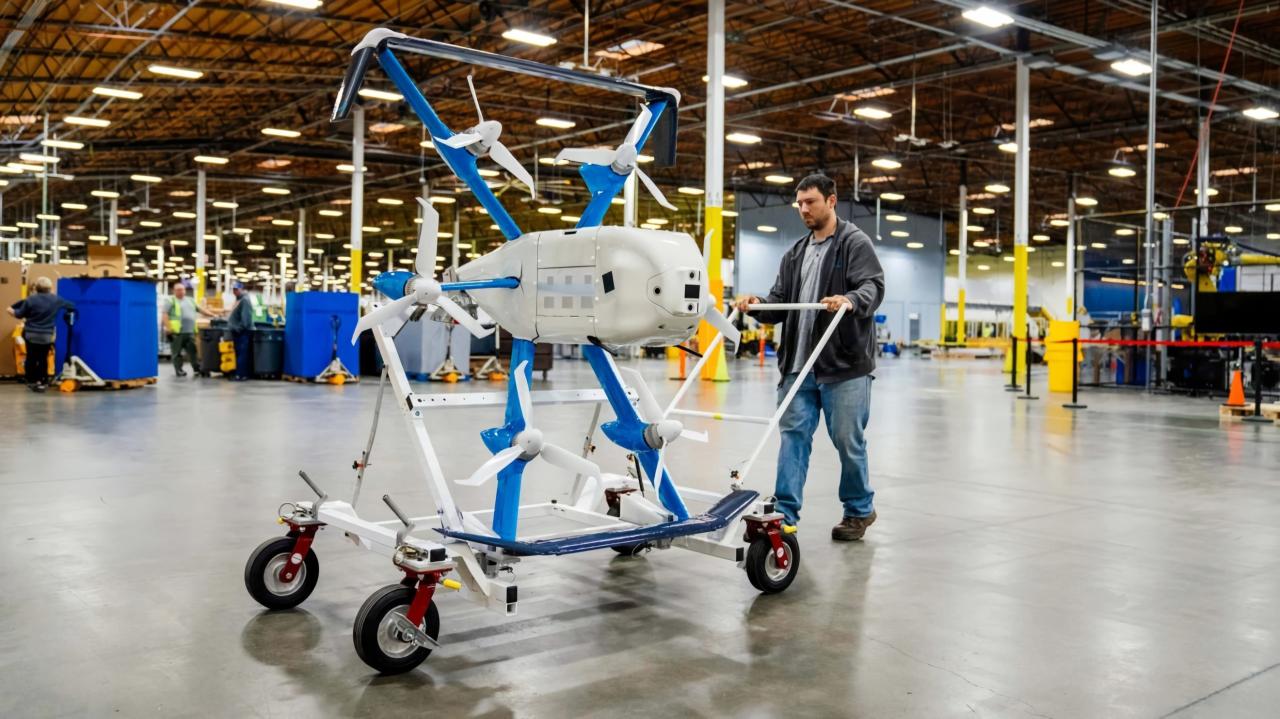
Amazon’s drone delivery program represents a bold step towards faster, more efficient shipping. While challenges remain, the program’s ongoing development and expansion demonstrate a commitment to innovation in the delivery sector. Understanding the complexities of drone delivery – from infrastructure needs to public perception – is crucial for assessing its long-term viability and impact on both consumers and the economy.
The future of delivery might just be taking flight.
Top FAQs: Amazon Drone Delivery Locations
What types of packages are currently eligible for drone delivery?
Currently, Amazon’s drone delivery program typically handles smaller, lighter packages. The exact weight and size limits vary depending on the location and drone model.
How long does a drone delivery typically take?
Drone delivery times are significantly faster than traditional methods, often taking only 30 minutes or less for deliveries within a limited range of the drone delivery hub.
What are the environmental impacts of drone delivery?
While drones offer potential benefits in reducing traffic congestion and carbon emissions compared to traditional delivery vehicles, their environmental impact is a complex issue still under study. Factors like battery production and disposal need consideration.
Is drone delivery more expensive than traditional shipping?
The cost of drone delivery currently varies and is not necessarily cheaper than traditional methods. Amazon may adjust pricing based on factors like distance and demand.
